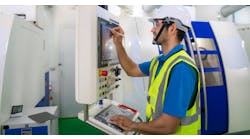Accurate and timely data is important in facilities management and equipment maintenance reporting. What's even more important is the way managers present this crucial data. Good maintenance reports are exceptionally helpful for businesses and companies, because recording maintenance history accurately and reliably leads to failure prevention while driving awareness about equipment maintenance.
If your maintenance reports are complete and correct, they can provide crucial information to grow or expand your business at an excellent speed, and improve your business’s bottom line at the same time. Did you know that monitored condition data, like sensor data and oil debris data relevant to an asset’s health, is required for reliability analysis?
A maintenance report, as the name indicates, is a document that includes crucial information regarding each repair and maintenance task or work that’s done on an asset or piece of equipment. Keeping equipment and assets at an optimal working condition minimizes the risk of unscheduled downtime. Also, if maintenance is required, you should keep a comprehensive and detailed record. Maintenance reports keep track of asset failures and repairs.
Traits of a good maintenance report
Accuracy. This important data-quality characteristic means that information in a maintenance report is correct. And the data source is known to be typically correct, consistent, factual, and precise.
Accuracy is an essential data-quality characteristic in maintenance records because inaccurate information is likely to cause significant issues with severe consequences, including sudden equipment failure and injuries.
Timeliness. Timeliness refers to providing users with asset-maintenance information quickly enough for the users and decision-makers to act. The data reflects the real-world value in a timeframe. If it was collected in the past hour or week, it is timely – unless newer information has come in, rendering previous information useless.
Is the maintenance data from a specific period appropriate for the appraisal’s effective date? Data, such as asset-performance data, would be measured on timeliness if it’s a dynamic record instead of a static record. The timeliness of maintenance information and reporting is an important data quality characteristic.
This is because the information that is not timely may lead you to make the wrong decisions, such as early asset purchase. This, in turn, can cost your organization money, time, and reputational damage.
Completeness. Completeness defines how comprehensive the maintenance information is. The dataset should contain all the requisite information to be complete. When considering data completeness, you should think about whether all the data that you need is available; for example, you may need the number of equipment service technicians, including experts and novices.
Reliability. In the world of data quality characteristics, the reliability of a maintenance report means that a piece of information does not contradict another piece of information present in a different system. So, all data in your database, such as asset downtime and depreciation, should be traced back and connected to other data.
Relevance. Another trait of a good maintenance report is data relevance, and relevance comes into the picture because there needs to be a good reason for collecting specific asset-maintenance and repair information in the first place.
It is important to consider whether you really need that information – or whether you are collecting information simply for the sake of it.
Relevance matters because if you don’t gather relevant information, you will waste time and money. This is because your analyses will not be as valuable as you would like.
Trustworthiness. This means that the data source should be objective, impartial, and credible. It usually involves validity and reliability. This boils down to the important question: “How do you really know that your findings and information are true and accurate?” The source of maintenance data and records should be impartial and neutral.
The importance of keeping maintenance records
Regardless of the maintenance strategy that you follow, insights generated from maintenance data can help you only when they are accurate, complete, reliable, and detailed. The significance of keeping accurate and complete maintenance records includes having information regarding each asset, machinery, or piece of equipment your organization or business has.
These reports include information like when the maintenance was last performed on an asset or when it was bought. The good news is that maintenance software can now alert maintenance managers regarding upcoming maintenance activities.
If your goal is to optimize the reliability of your equipment, you should keep equipment and assets in functional condition. You also should consider different sources of information across various departments, such as:
• Equipment or asset type, including expensive assets, critical assets, low-priority assets, and assets or equipment likely to fail regularly;
• The number of equipment service technicians, such as veterans, experts, and novices;
• Activity associated with the equipment or asset, like the actions taken on the asset, downtime, warranties, depreciation, and spare-part inventory; and,
• Compliance, including validations, inspections, approvals, policies, and regulations.
Keep in mind that the interdependence of these factors requires you to link your data from one variable to the other. This will help you get a clear and comprehensive picture of maintenance operations.
For example, you can view your team’s response time (average) and resolution time from the team performance report. You also will find the total labor hours that each user spent over a specific time. This is critical information and it will help you determine when to schedule preventive maintenance and work orders based on the availability of your technicians. This also can help you determine whether you are understaffed.
Having quality maintenance records and reports is important as it helps avoid expensive repairs. You probably know and understand that the maintenance of some equipment and assets is less expensive, while for some the costs are exceptionally high. The fixing or repair cost is the sum required to restore equipment and assets to working condition.
In today’s digital and data-driven work environment, fully understanding how your assets are performing—and discovering various areas to cut costs and improve efficiencies — are essential. All advanced companies and businesses rely on the precision and accuracy of information. Without it, all assets and cutting-edge technology do not mean much. This is because the outcomes you achieve rely on the nature and quality of data you have.
Bryan Christiansen is the founder and CEO of Limble CMMS. Limble is a modern, easy-to-use mobile CMMS software that takes the stress and chaos out of maintenance by helping managers organize, automate, and streamline their maintenance operations.






